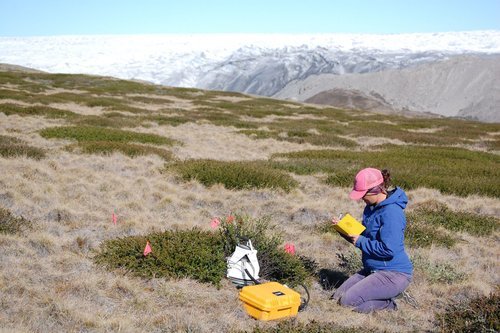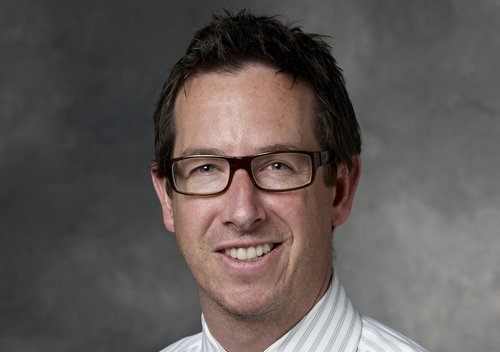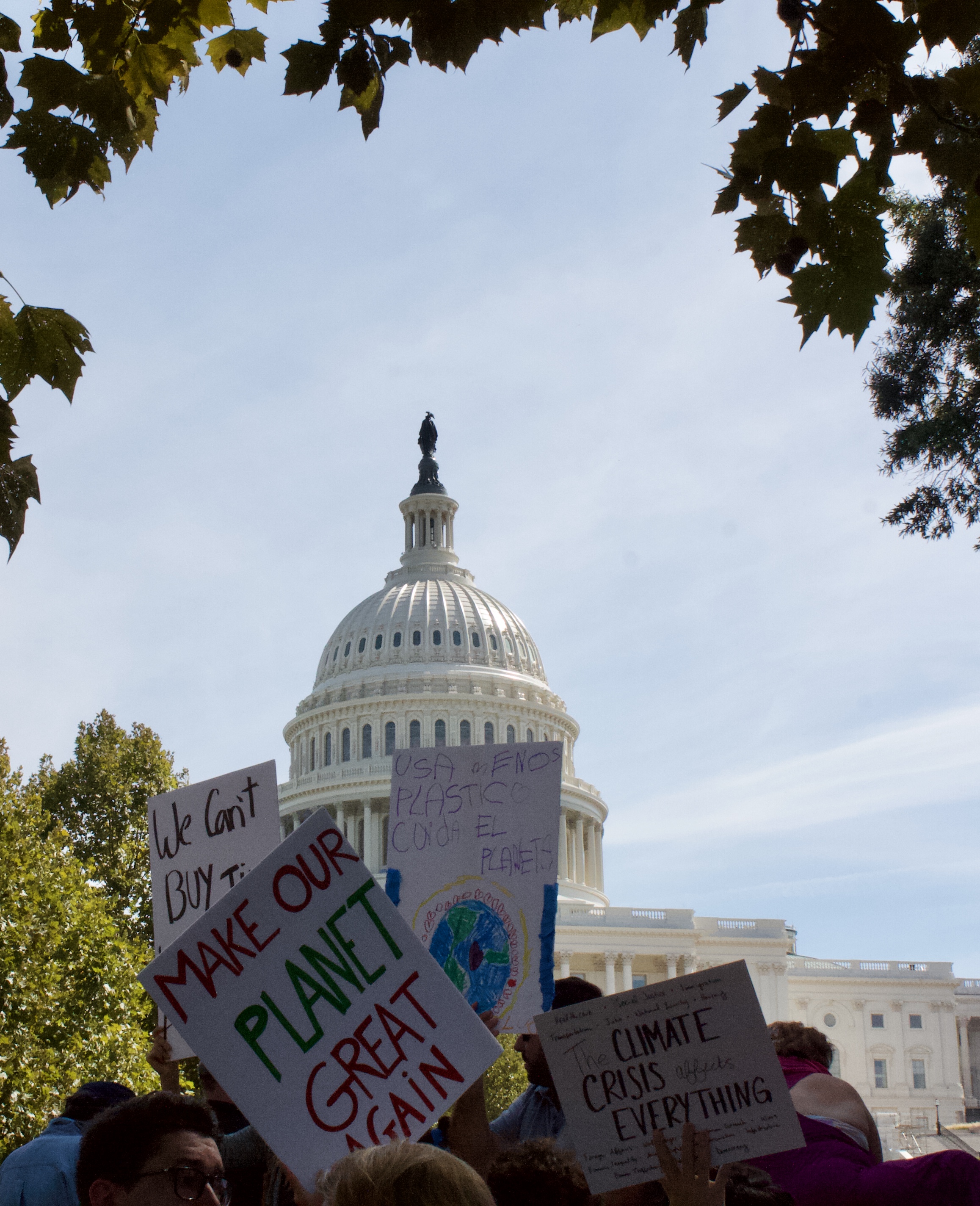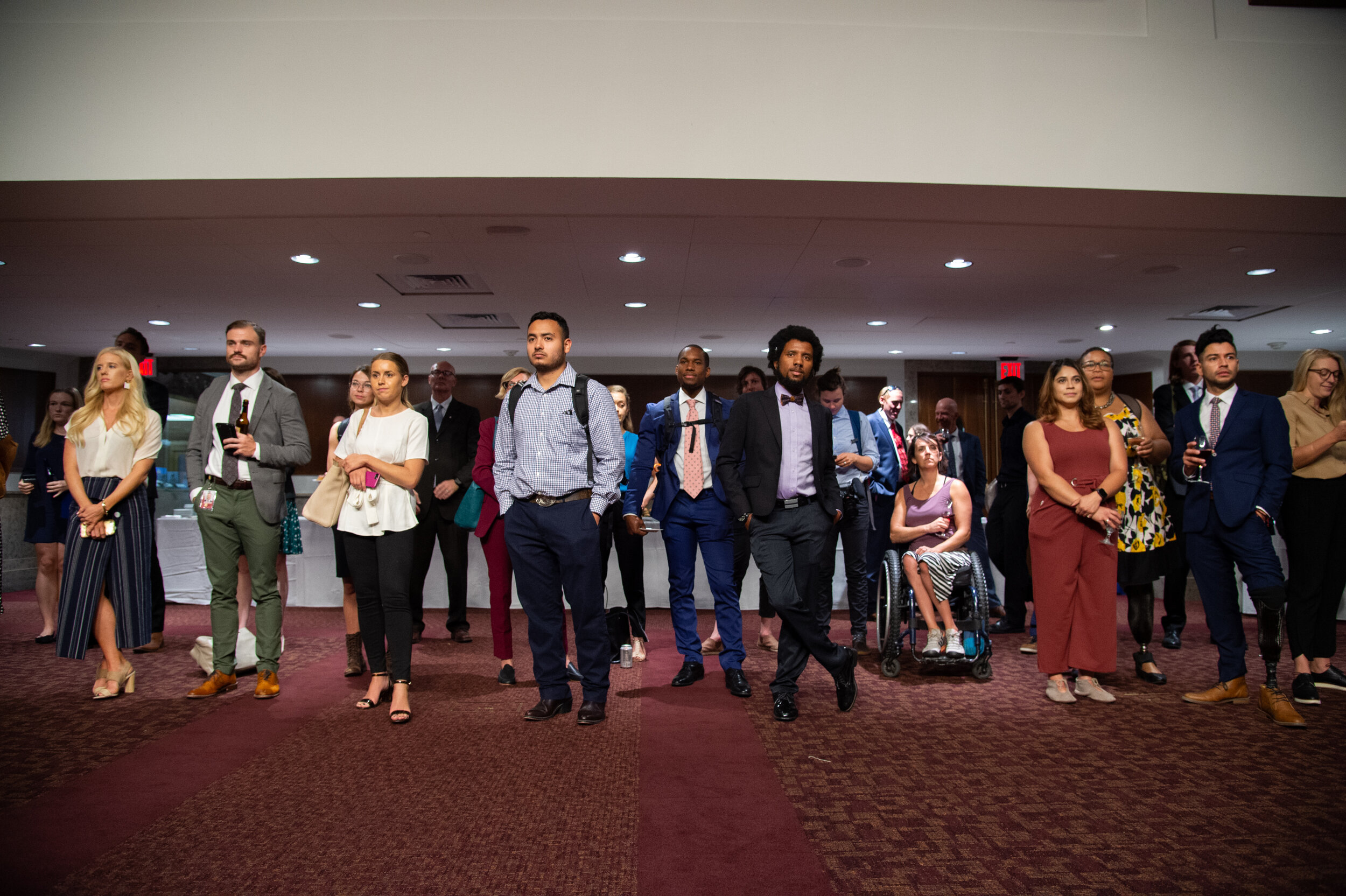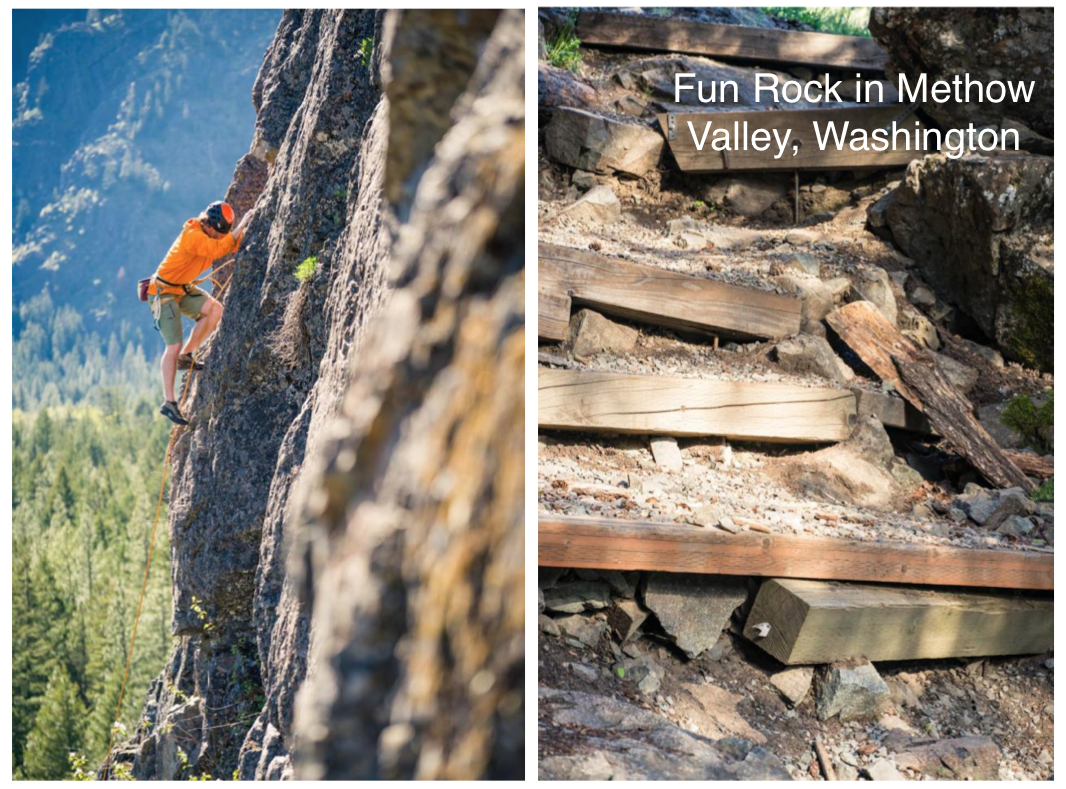AAC Researchers are scholars and scientists who have conducted environmental research in part through AAC funding. These are their stories.
Past Award Recipients
Scott Braddock
2019 Research Grant Recipient
Climate impacts on the glaciers and wildlife of the Southern Patagonian Icefield, Chile
The primary goals of this project are to identify the dominant mechanism of tide-water glacier acceleration in the SPI, specifically Témpano and Bernardo Fjords (Figure 1), and to establish a working relationship with both local Chilean government (CONAF) and international (Round River Conservation Studies) organizations to continue this research theme into the future. This partnership will provide resources and logistical support as well as the opportunity to share equipment and data in the greater effort of understanding and conserving the SPI. In addition, we will have the opportunity to not only publish our findings in journals but also to share these findings with local communities and students (ages 8-21) through field trips, classroom visits and citizen-science efforts around the SPI. It is our hope that this interdisciplinary approach will help to inform and involve these communities to continue conservation and protection of national parks in Chile and build upon our research efforts in a collaborative nature.
Anais Zimmer
2019 Research Grant Recipient
Future of Periglacial Landscapes: Alpine Ecosystems and Deglaciation in the Tropical Andes and French Alps
First, this research permits to understand the future of proglacial landscapes at a local scale to enhance decision-making and land use management, generating scientific reports for municipalities, regional or national governments. Second, this proposal aims to develop applied solutions to respond to actual and future problems in mountain regions. Our grazing experiment in Peru tests a local solution that can be implemented at a larger scale and in other mountain systems to respond to regional problems. Third, our results from both continents will advance complementary studies worldwide in such regions as the Central and Southern Andes, the Arctic and Scandinavian Mountains, the Himalayan region, and Africa.
In addition, this research provides the groundwork to create awareness and promote international policies for the conservation of deglaciated landscapes. We aim to influence the broader community of international organizations that work on conservation (such as the IUCN, UNESCO, Mountain Research Initiative, ICIMOD, The Nature Conservancy, among others) in a call for the protection and restoration of proglacial landscapes. Up until now, there is no specific effort on this.
(Photo by: Carlos Ly)
Martí March Salas
2018 Research Grant Recipient
The effect of rock climbing on Mediterranean cliff vegetation: Implementation of an innovative and comprehensive methodology in a wide geographical range
This project proposed to evaluate the effects of rock climbing on plant biodiversity in different locations with Mediterranean environmental conditions, one of the most widely distributed biomes around the world, including California, central Chile, Western Cape (South Africa), south of Australia, and the Mediterranean Basin. We conducted field-samplings in different regions along Spain, south of France, and California. This project provides a starting point for the study of the long-term effects of rock climbing on plant communities, and it was a first step for evaluate, for the first time, the effects of rock climbing in a wide geographic range.
Marie Faust
2018 Research Grant Recipient
Reproductive consequences of climate change-driven alterations in co-flowering between two subalpine plant species
In the summer of 2018, Faust conducted a short-term field experiment to investigate the effects of climate-driven shifts in co-flowering between Linum lewisii and Potentilla pulcherrima. She hoped to answer these questions: Do climate-driven changes in co-flowering between Linum and Potentilla affect fruit and seed set in Linum? Do climate-driven changes in co-flowering affect interspecific competition for pollinator services between Linum and Potentilla? Read her report and find her answers here.
Alison Criscitiello
2017 Research Grant Recipient
Histories of Arctic climate and environmental contaminants from a shallow ice core, Mt. Oxford, Ellesmere Island
This project involved the drilling of a new ice core on the plateau of Mt. Oxford, a peak on northern Ellesmere Island, to investigate Arctic Ocean sea-ice variability as well as climate and pollutant histories in this region of the Arctic. The records from this new ice core will be compared to records from other ice cores to offer new insights into the spatial variations in accumulation, moisture source, contamination, and marine aerosol deposition across the eastern Canadian high Arctic. Read more here.
Anya Tyson
2017 Research Grant Recipient
The Clark's Nutcracker Project: Engaging young adventurers in citizen science.
The whitebark pine is a high-elevation tree entirely dependent upon the Clark's nutcracker to disperse its seeds, and this tree species has suffered greatly from an invasive fungus and a native bark beetle. This research utilized the observation powers of young adventurers to collect data on whitebark pine and Clark's nutcrackers during wilderness expeditions across four remote mountain ranges in Wyoming and Montana. Read more here.
Emily Schultz
2017 Research Grant Recipient
The importance of within-patch heterogeneity for population dynamics of a high elevation pine.
With mountainous regions across the globe being strongly affected by climate change, it is important to develop reliable models for characterizing how mountain species are affected by environmental variation. This research used new and existing data for whitebark pine in the Elkhorn Mountains of Oregon to test whether within-population variation, such as elevation gradients, can change predictions for the persistence of this species. Read more here.
Kate McHugh
2017 Research Grant Recipient
Wilderness Rock Climbing Indicators and Climbing Management Implications in the National Park Service
What makes climbing in wilderness unique? How can climbing management practices honor local values and uphold wilderness ideals? McHugh’s study addresses the need to characterize the wilderness climbing resource in National Parks so that it may be appropriately monitored and managed. Deliverables of the research include, first; a critical review of literature, law, policy, and agency practices, and second; the development of tools to describe and define the wilderness climbing resource and a monitoring protocol to document change over time. Research is in-progress; a final report will be posted upon completion.
Nathalie Chardon
2016 and 2017 Research Grant Recipient
Quantifying the Effects of Anthropogenic Disturbance on Alpine Flora on Colorado's 14'ers
Hiking on Colorado's tallest peaks is rapidly increasing in popularity, yet the effects of this increase are poorly understood. This study integrates a two year field study with ecological modeling techniques to elucidate how these fragile alpine ecosystems are responding to this pressure. Read more here.
The AAC recently interviewed Nathalie on climate change, her research and climbing. Read the interview here.
Rachael Mallon
2017 Research Grant Recipient
Biogeography of Snow Algae Communities in the Pacific Northwest
The pink or "watermelon" snow seen occasionally in alpine environments is indicative of the presence of snow algae, one of the many species inhabiting biodiverse alpine ecosystems. The algae's pigmentation increases snow melting, making research into the snow algae populations critical to climate change models. This researcher collected samples from Oregon and Washington for molecular analysis to better understand variability across snow algae communities in the Pacific Northwest. Read more here.
The National Renewable Energy Lab wrote a piece about Rachel’s work. Read it here.
Rebecca Finger
2017 Research Grant Recipient
Limitations to shrub expansion in a warmer Arctic
The warming Arctic is experiencing increases in plant growing season length, but some regions have seen a decline in tundra plant growth while others have experienced increased tundra plant growth. This research examined potential landscape changes over the last fifty years in West Greenland and studied abiotic and biotic controls on modern-day shrub growth and distribution. Read more here.
Alice Hill
2016 Research Grant Recipient
Dissecting River Flow: Quantifying How Melting Glaciers and Snow Impact Central Asian Water Stress
This research took place over a 500 km stretch of the Naryn River draining the western flanks for the Tien Shan Mountains in Kyrgyzstan. The work aims to quantify the relative source water contribution from snow, ice, groundwater, and rain to lowland river flow in an arid Central Asian catchment to better understand potential future flow vulnerabilities across this volatile region. Read more here.
The AAC recently interviewed Alice on climate change, her research and climbing. Read the interview here.
Jonathan Burton
2016 Research Grant Recipient
Assessing Risk of Glacial Outburst Flooding from the Imja Lake, Nepal
Located southeast of Mt. Everest, The Imja Lake is dammed by the terminal moraine of the Imja Glacier. As melt water from the glacier causes the Imja Lake to grow, the risk of catastrophic flooding to the down-stream communities grows. This study measured glacial dimensions, glacial retreat and lake depth over several years to model future glacial dynamics and the risk of outburst flooding. Read more here.
Katie Epstein & Jessica DiCarlo
2016 Research Grant Recipients
Surveying Adaptation and Recovery in Mountain Farming Communities in Nepal After the 2015 Earthquakes
Nepal is still recuperating from the series of earthquakes that occurred early in 2015. In this study, households in farming communities in the mountainous district of Dolakha are interviewed and surveyed. Results indicate that subsistence agricultural systems were heavily impacted in the earthquakes and that household perceptions of recovery are highly differentiated, despite largely uniform and widespread damages across study sites. Read more here.
Read Epstein and DiCarlo's article in Ecology and Society here. They have also published this research in Case Studies in the Environment and Ambio: A Journal of the Human Environment.
Nathan Fry
2016 Research Grant Recipient
Evaluating Efficacy of Outdoor Education in Implementing Social-Ecological System Behavior in the Kyrgyz Republic
The purpose of this project is to create an ecological leadership curriculum that effectively combines “best practices” in adventure leadership and environmental education and apply the curriculum to the American University of Central Asia’s pilot Ecological Leadership Program. Read more here.
Grant Lipman
2015 Research Grant Recipient
Analyzing the Efficacy of a New Potential Acute Mountain Sickness Medication
Acute Mountain Sickness (AMS) is a condition often triggered by rapidly ascending to a higher elevation, without proper acclimatization. The purpose of this trial is to investigate the usefulness of the drug budesonide as a prevention/treatment medication for AMS. Results are compared to the standard AMS treatment: acetazolamide. Read more here.
Kristin Schild
2015 Research Grant Recipient
Constraining a Prominent Driver in Glacier Terminus Stability from the Tidewater Glacier Kronebreen to Kongsfjorden, Svalbard
The Kronebreen glacier in Svlabard, Norway, was the prime location for this research. The work aims to study water samples collected at the glacier to quantify the magnitude and variation of glacier-driven fjord circulation in order to make more accurate predictions about the influence of a warming climate on ice discharge and on physical and biological dynamics within the fjord. Read more here.
The AAC recently interviewed Kristin on climate change, her research and climbing. Read the interview here.
Robin Thomas
2015 Research Grant Recipient
Relative Dating of Glacier Moraines in the Cordillera Blanca
Black carbon is believed to be contributing to climate change by absorbing sunlight and released as heat when deposited on the Earth’s surface. The black carbon snow sampling project involved climbing up onto glaciers in Peru to collect snow samples and measuring the reflectivity of the snow. This is just one of the several studies conducted with the help of this award. Read more here.
Tim Graham
2015 Research Grant Recipient
Assessing the Impacts of Introduced Mountain Goats on La Sal Mountain Alpine Arthropod Communities
Non-native animal species can threaten sensitive ecosystems. Recently, 35 non-native mountain goats were brought to the La Sal Mountains along the Utah/Colorado border. This research investigates the consequences of that introduction by surveying arthropod communities before and after the mountain goats were brought to the area. Read more here.
Trevor Bloom
2015 Research Grant Recipient
Investigating the Impact of Climate Change and Wildfire on High Elevation Wildflower Saxifraga Austromontana in the Rocky Mountains
High elevation ecosystems are experiencing the impact of climate change with many species moving up North in search of cooler climates. This study focuses specifically on the Saxifraga austromontana (spotted saxifrage) and seeks answers on how the species will fare under the impact of climate change and increased fire frequency. Read more here.
The AAC recently interviewed Trevor on climate change, his research and climbing. Read the interview here.











